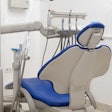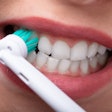Dental bleaches release mercury from amalgam, researchers report in the current Journal of Dental Research (March 1, 2009, Vol. 88:3, pp. 239-243). But the researchers concluded that a patient would have to have a mouthful of amalgam fillings to suffer any health effects as a consequence.
For their study, researchers from the University of Manchester divided 65 disks made of dental amalgam into 13 groups. They immersed the groups in 0%, 3.6%, 6%, or 30% concentrations of hydrogen peroxide for 1, 8, 48, or 168 hours.
They sampled for mercury using inductively coupled plasma mass spectrometry. They found that in general the higher the concentration of hydrogen peroxide, the more mercury was released into the solution. Also, the longer the samples soaked in bleach, the more mercury they released, though the increase reached a plateau at 8 hours.
The mercury disks released between 0.03 and 0.035 micrograms per square millimeter (µg/mm²) of the disk surface squared. Previous experiments cited by the authors ranged from 0.02 to 0.045 µg/mm².
This amount doesn't cross the threshold for danger established by the World Health Organization (WHO), the authors wrote. The WHO established a maximum acceptable daily intake of 40 µg. To reach that level with 6% to 30% bleach, the authors wrote, a patient would have to have at least 37 amalgam restorations.
"Bleaching should not give cause for concern," they concluded.
Copyright © 2009 DrBicuspid.com















